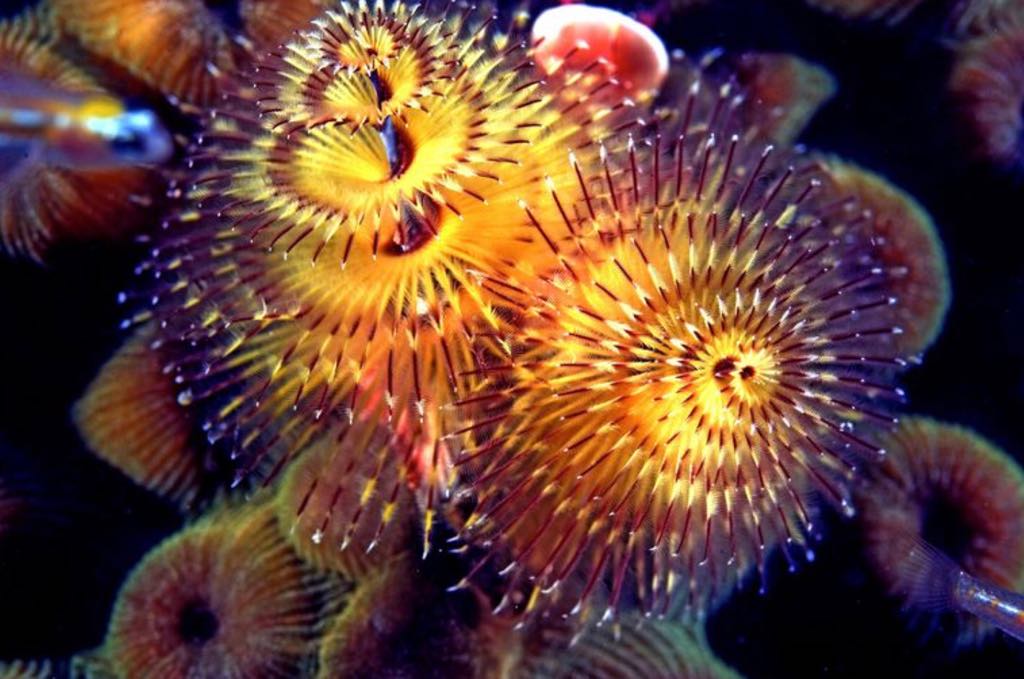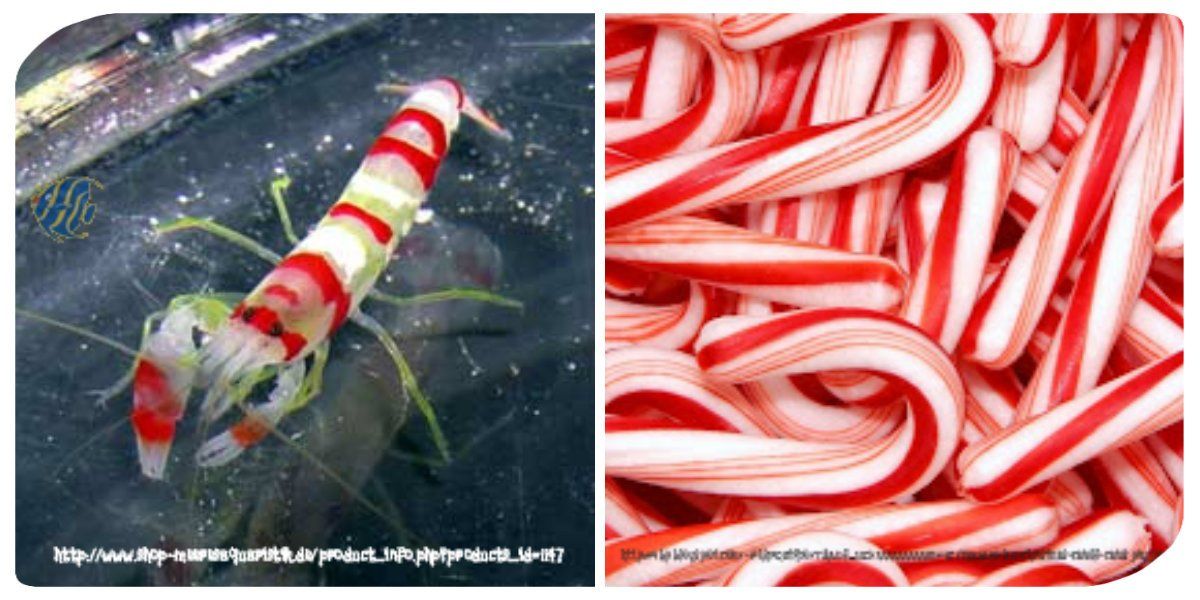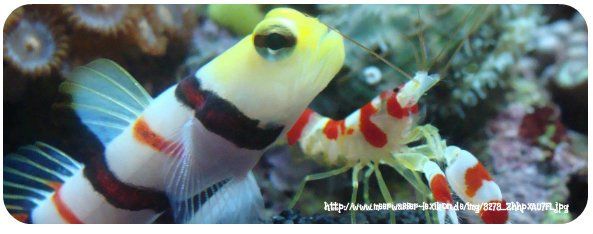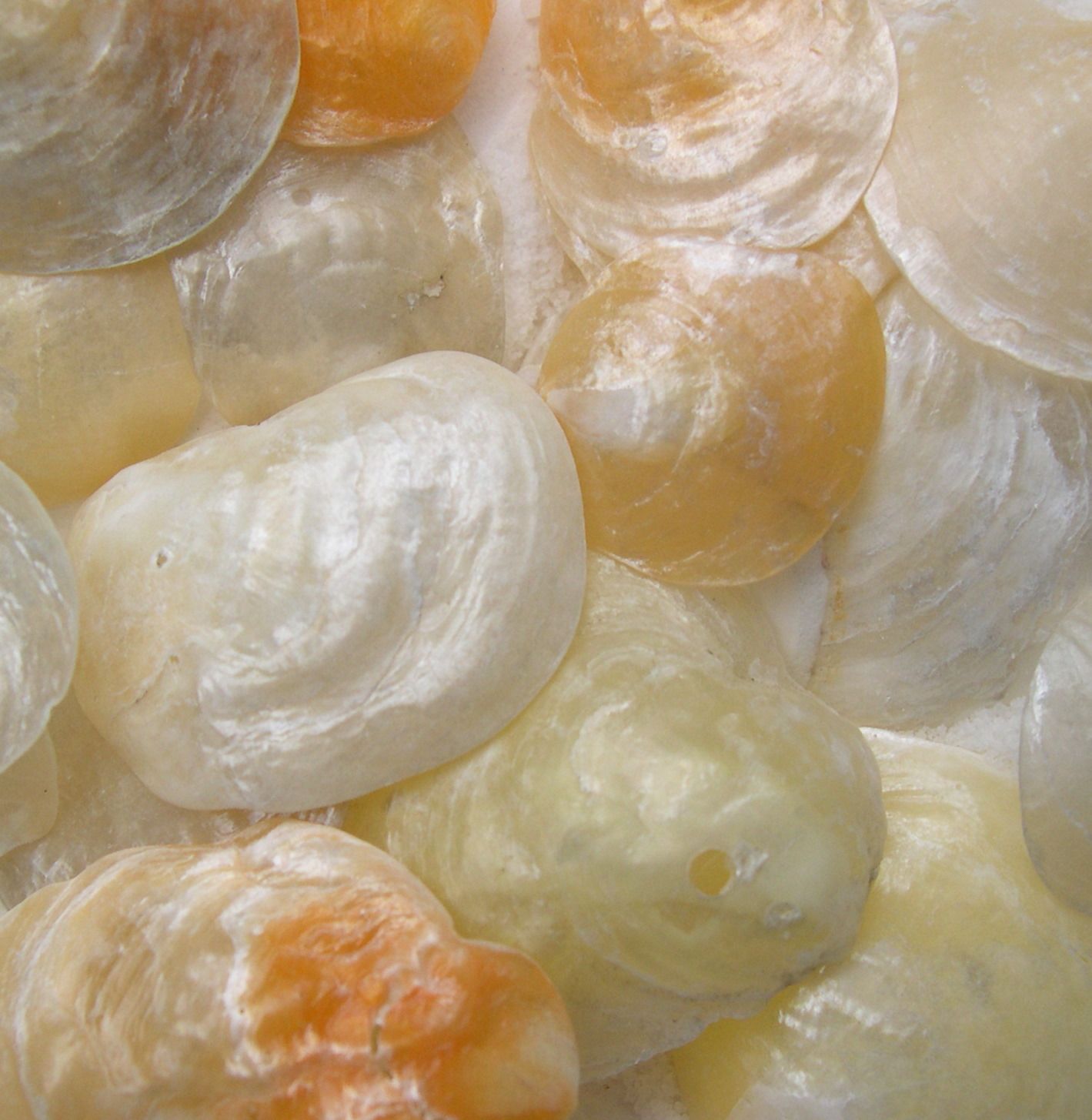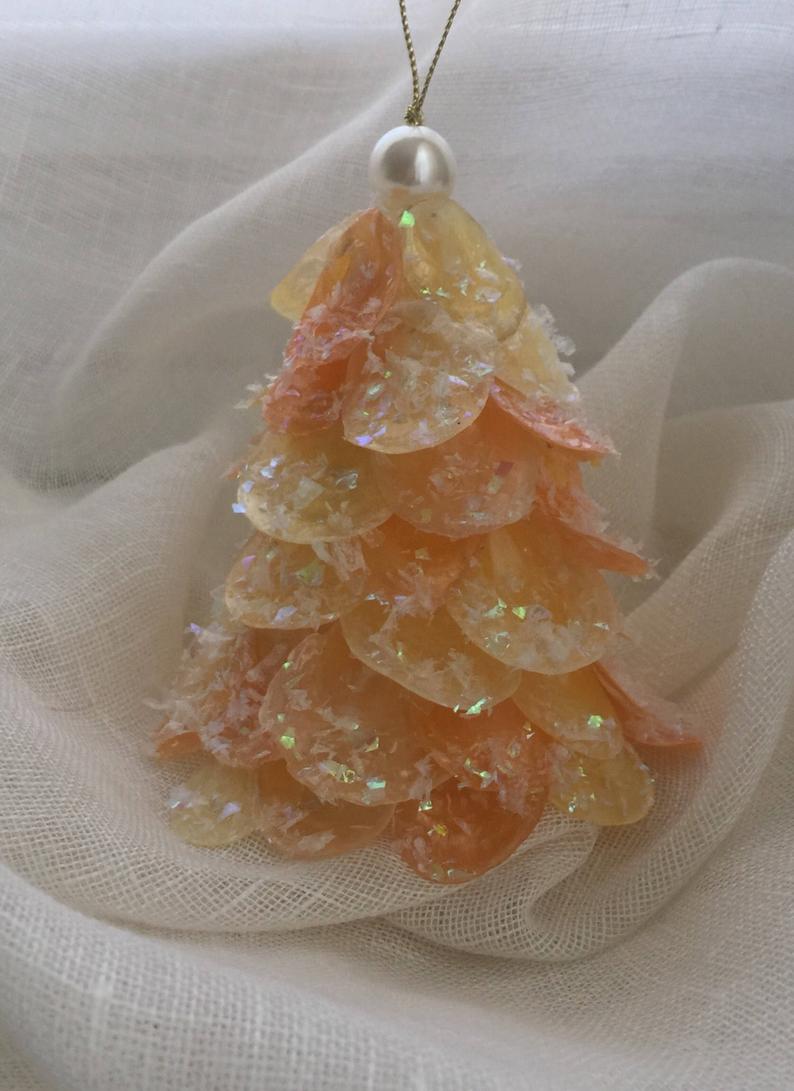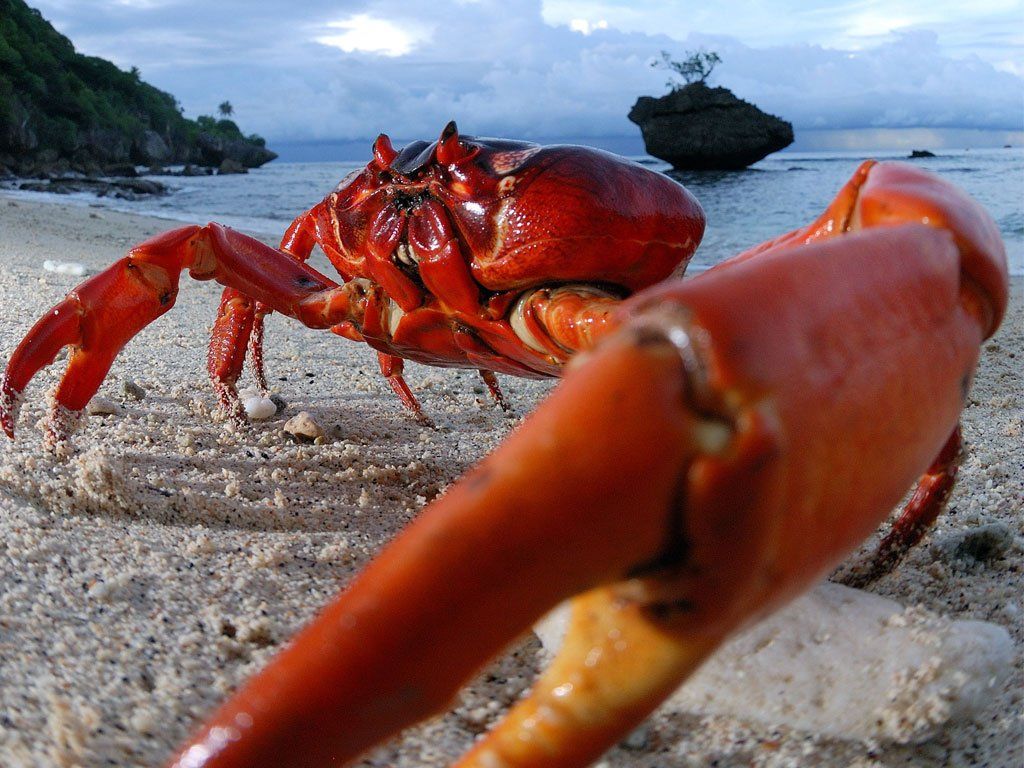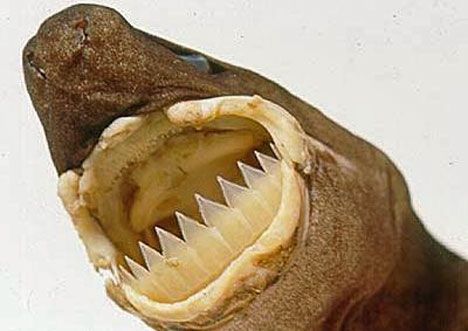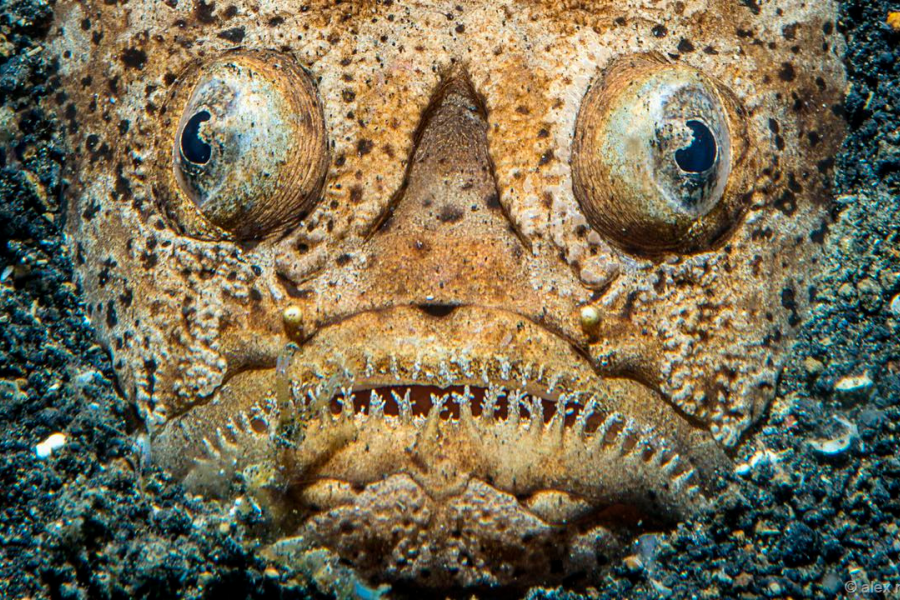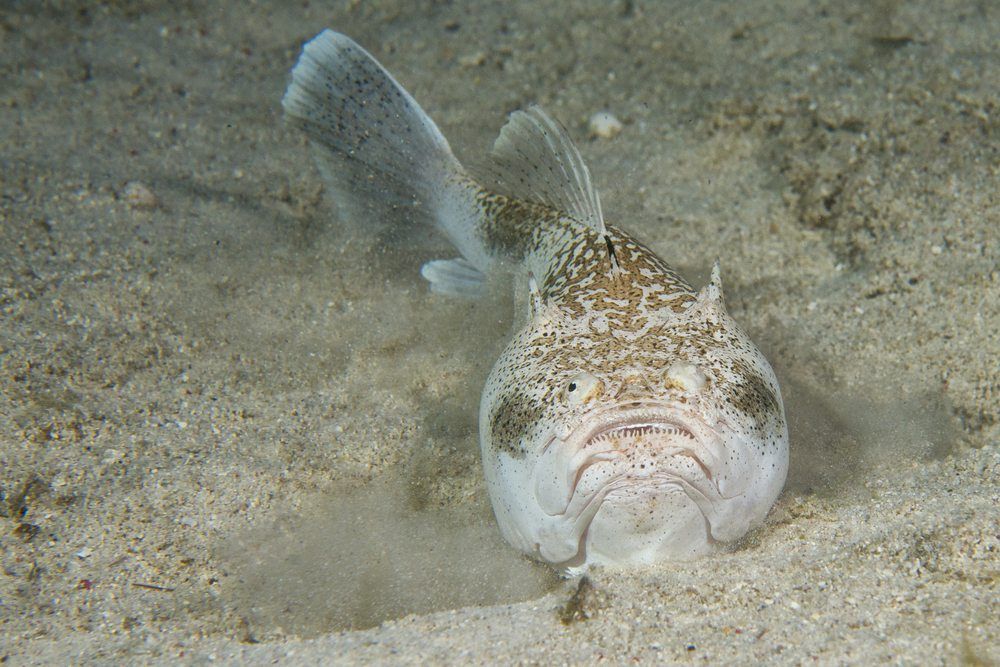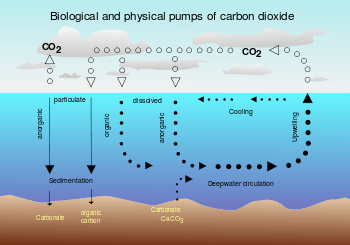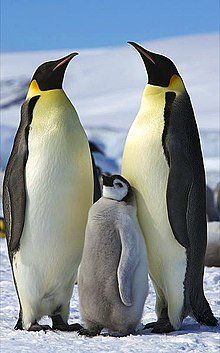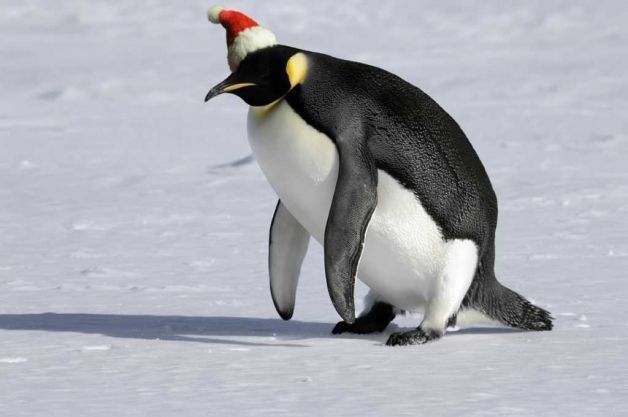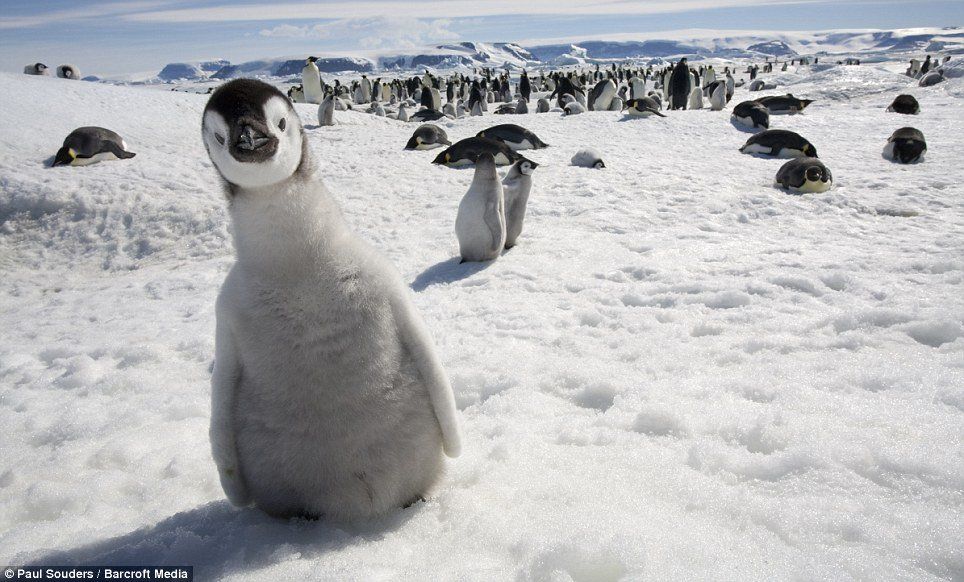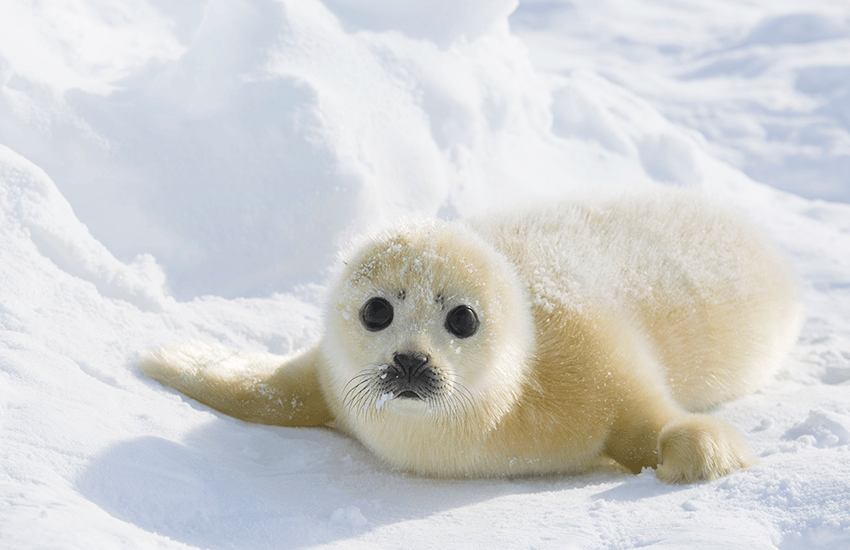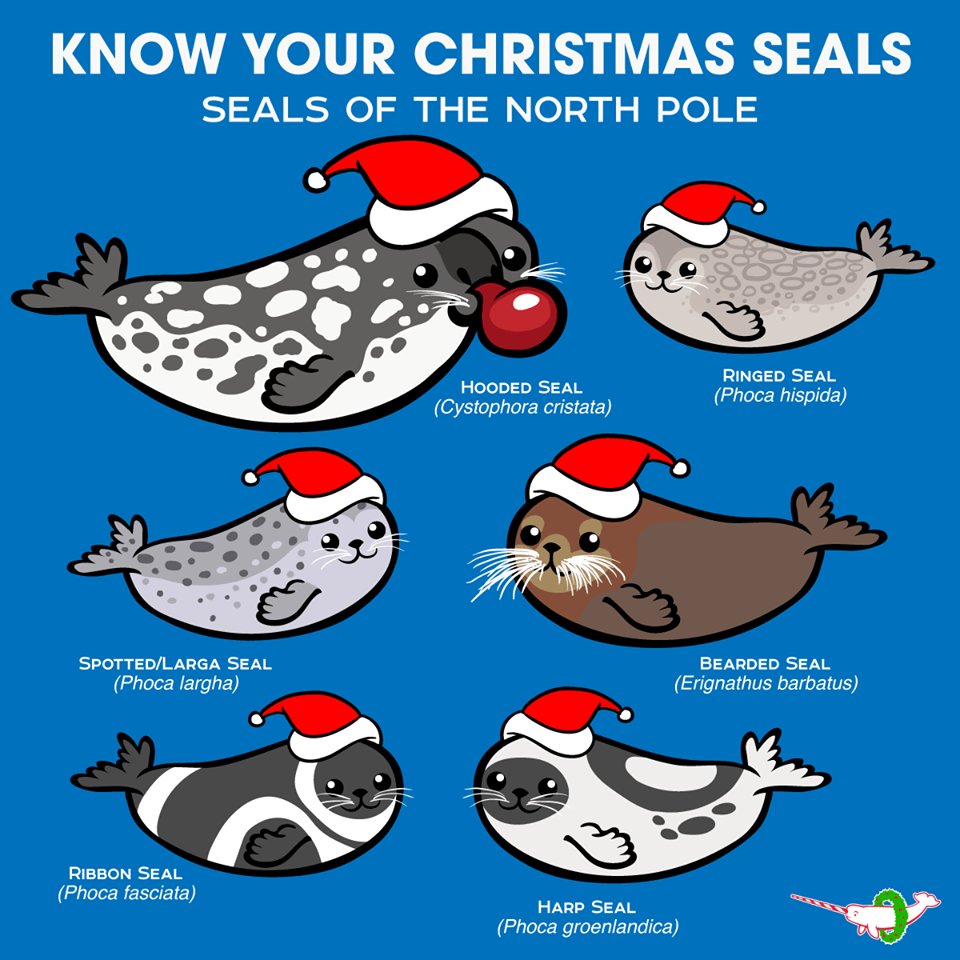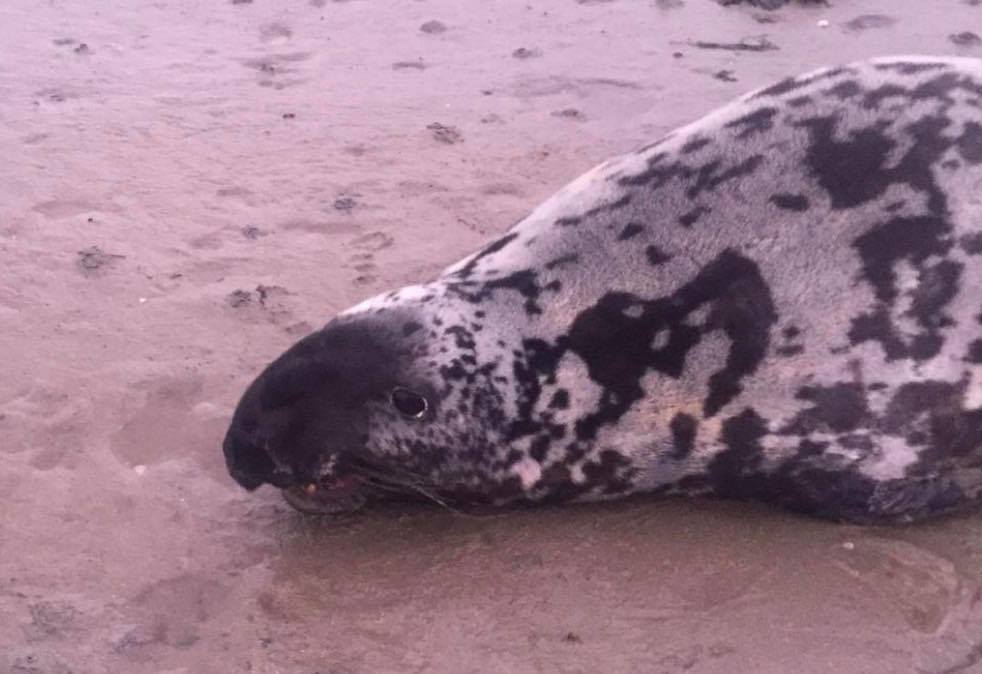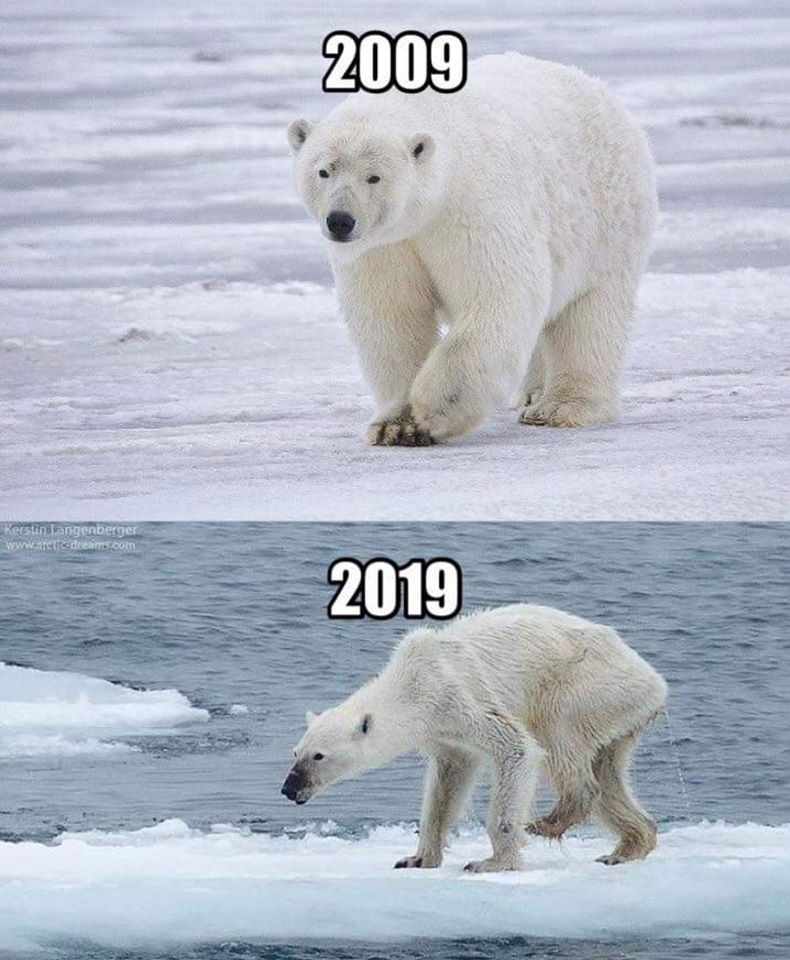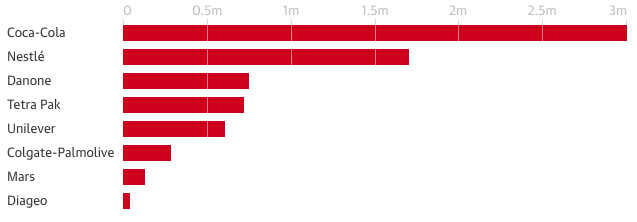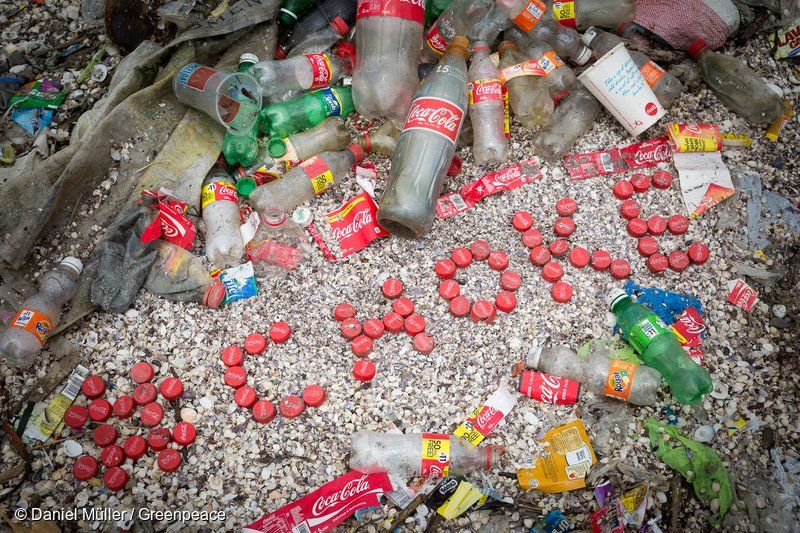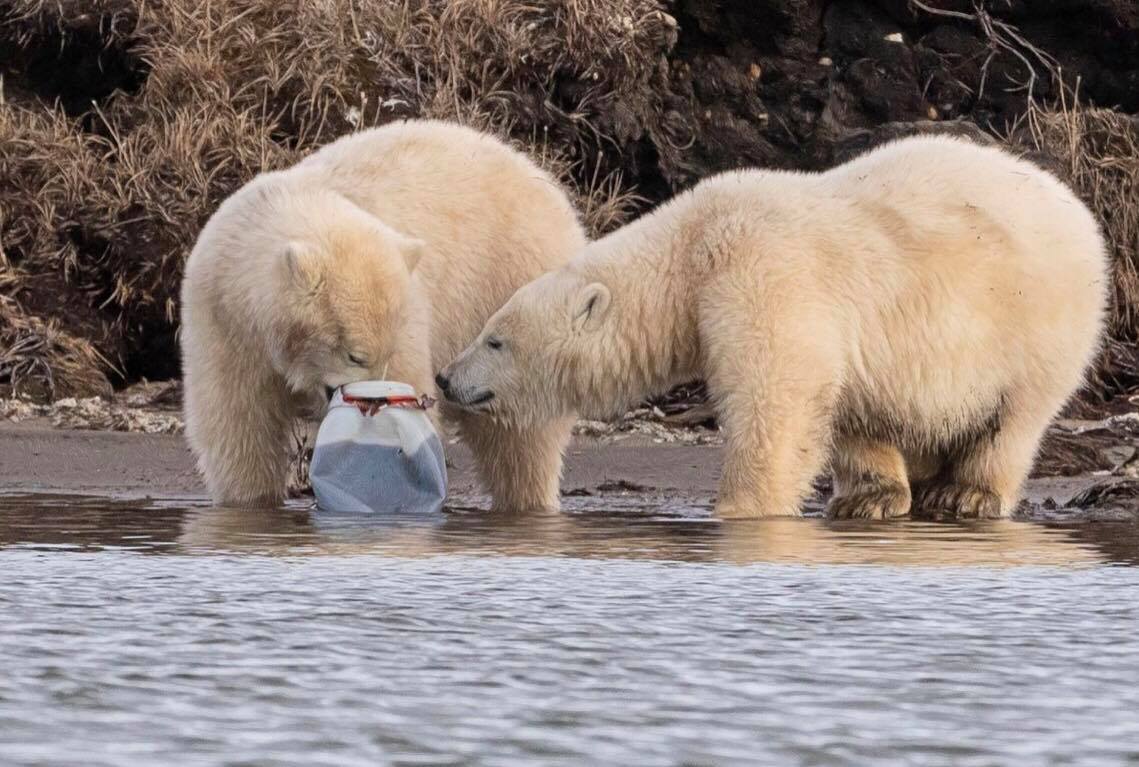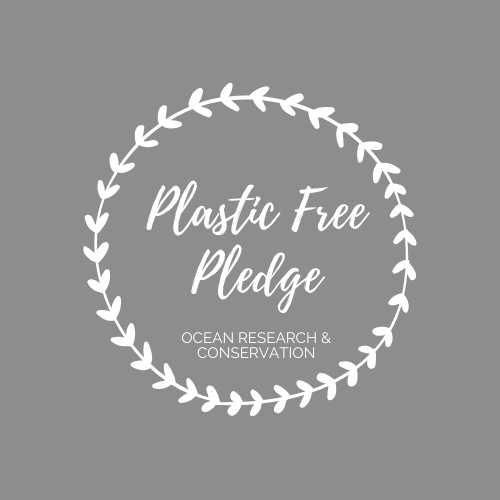The Twelve Marine Species of Christmas!
For the 12 days of Christmas we are creating a daily list of marine species that are associated with the Christmas holidays. You may be surprised to learn that there are a diversity of marine species whose naming had been influenced by the festive feeling. Follow along our post and thread to get daily updates on the 12 marine species of Christmas.
1. Christmas Tree Worm:
| Kingdom: Animalia | |
| Phylum: Annelida | |
| Class: Polychaeta | |
| Subclass: Sedentaria | |
| Infraclas: Canalipalpata |
On the first day of Christmas...
We present the Christmas Tree worm ( Spirobranchus giganteus
), a marine invertebrate that can be found on tropical coral reefs around the world.
- Christmas tree worms are one of the most commonly recognised polycheates, a burrowing marine species which can be observed in a variety of bright colours, making them easily spotted by divers. There are over 13,000 species. They are quite small, averaging about 1.5 inches in length and are aptly named for their appearance of a Christmas Tree.
- Every Christmas tree worms has two brightly coloured crowns that erupt from its tube-like body. These Christmas tree-like crowns are composed of radioles, or hair-like appendages radiating from the worm’s central spine. These appendages are used for respiration and to catch nutrients, which typically consists of microscopic plants, or phytoplankton, floating in the water with their feathery structures that are lined with both sticky mucus and spiky bristles (called cilia). These crowns also harness oxygen and so, the structures are often mistakenly called gills.
- These worms are sedentary, meaning that once they find a place they like, they don’t move much. In fact, while the colorful crowns of these worms are visible, most of their bodies are anchored in burrows that they bore into live coral. When startled, Christmas tree worms rapidly retract into their burrows, hiding from would-be predators.
- Two-thirds of the body of a Spirobranchus lies hidden in a calcium carbonate tube.- A Christmas tree worm can live upwards of 30 years! (Although 10-20 is more common.)
- Unlike other marine invertebrates which often reproduce asexually, there are actually male and female Christmas tree worms. These animals are broadcast spawners, meaning they shoot their genetic contribution into the surrounding water, in the hope that it fertilises a female. Once fertilisation occurs, it takes just 24 hours for a larvae to develop.
2. Candy Cane Shrimp:
| Kingdom : Animalia | |
| Phylum : Arthropoda | |
| Subphylum : Crustacea | |
| Class : Malacostraca | |
| Order : Decapoda | |
| Infraorder : Caridea | |
| Superfamily : Alpheoidea | |
| Family : Alpheidae |
On the second day of Christmas....
On the second day of Christmas we present the "Candy Cane Snapping Shrimp", Red Pistol shrimp or also known as the Randall’s pistol shrimp ( Alpheus randalli
).
The Candy Cane shrimp is native to the Indian and central Pacific oceans, and is named after its striped coloration which makes it look like a candy cane.
-The Candy cane shrimp has a symbiotic mutualism with the Randall’s prawn goby, ( Amblyeleotris randalli),
as they depend on each other for survival. The goby will hover over the shrimp, keeping its fin attached to the shrimp’s antennae, and If there is danger, the goby will flick its tail and send a signal to warn the shrimp. The mutualistic relationship also includes living and eating arrangements.
-These animals share a home, with shrimp (which has poor eyesight) burrowing into the ground, while the goby will use its great eyesight to keep watch for predators.
3. Jingle shells:
| Kingdom : Animalia | |
| Phylum : Mollusca | |
| Class : Bivalvia | |
| Order : Pectinida | |
| Superfamily : Anomioidea | |
| Family : Anomiidae |
On the third day of Christmas...
On the third day of Christmas we present the jingle shell ( Anomia simplex
), a common bivalve found on the Atlantic coast of North America, amongst the more commonly known clams and oysters.
Typical of oysters, the lower shell is attached to a hard surface. Even after the mollusk is dead, the shell keeps its beautiful and shiny exterior. The thin, translucent shells are often used in jewellry, and when strung together can sound like bells, hence the name.
The word shell originates from the Teutonic root " skal
" ( to peel off or separate), the Icelandic " skel"
(tile) and Middle English schelle
(small bell). Across the globe and through-out human history we have used shells as ornaments and are perhaps one of the oldest items to be made into jewellery. Beads, necklaces and bracelets have been found from the Palaeolithic period in Europe. Shell disk beads are reported in Archaemineralogy books being found in Ancient Egyptian sites and used up to the 22nd Dynasty used until the Middle Ages (Lucas, 1989). Shells have also been exploited through-out history for food, dye, tools, ornaments, trade goods, money and ritual objects.
Shells are important indicators in both the natural geologic record and the archaeological record as they are mostly composed of calcium carbonate
, calcium phosphate
, magnesium carbonate
, and silica.
Recent attention has grown towards the devastation the seashell trade is having on marine environments across the globe. When shells are used for jewellery and decorative items like lamps and picture frames, the removal of living animals inside them from the ocean is an issue as they served a variety of ecological roles, including providing an anchorage for epiobonts like algae that provide food for marine life and for filter-feeding barnacles, which help clean the water. Industrial scale enterprises can have significant negative impact on the marine ecosystem, and it is often hard to get protection for less "charismatic marine animals" such as clams and oysters.
In a study using data spanning over 30 years, researchers found that the removal of shells from beaches could damage ecosystems and endanger organisms that rely on shells for their survival. Researchers from the Florida Museum of Natural History
conducted monthly quantitiative surveys of seashell abundance on Spain's north-eastern Mediterranean coasts (Llarga Beach) with increasing tourist numbers between 1978 and 1981. Their focus at the time was not of ecology but of palaeontology, to gain a better understanding of what happens to shells after the organisms that inhabit them die.
They found that the abundance of seashells had decreased by 60% while tourism had increased in the area by 300%. The decline was not associated significantly with fisheries as they had been closed since the 1970's and it was noted that seashell abundance was particularly low in tourist-heavy summer seasons and there were no other influential factors such as major environmental or ecological changes. Beachcombers and recreational vehicle use on sand was attributed to the decline in seashells.
So ocean lovers, you should think twice the next time you pocket a seashell from the beach you might be damaging the seaside environment.
4. Christmas Island Red Crab:
| Kingdom : | Animalia |
| Phylum : | Arthropoda |
| Subphylum : | Crustacea |
| Class : | Malacostraca |
| Order : | Decapoda |
| Infraorder : | Brachyura |
| Family : | Gecarcinidae |
| Genus : | Gecarcoidea |
| Species : | G. natalis
|
On the fourth day of Christmas...
On the fourth day of Christmas we present the Christmas Island red crab ( Gecarcoidea natalis
), a species of land crab that is endemic or only found on Christmas Island and Keeling Islands in the Indian Ocean. Christmas Island crabs once numbered at an estimated 43.7 million adults, however the accidental introduction of the yellow crazy ant (Anoplolepis gracilipes)
to Australia and the Indian Ocean is believed to have killed about 10–15 million of these in recent years due.
Each year, linked with the lunar calendar, the Red Crab undergoes a massive migration, usually beginning during the island's wet season, and millions of crustaceans travel from the rain forest to seaside breeding grounds to mate.
5. Cookie-cutter shark:
| Kingdom : | Animalia |
| Phylum : | Chordata |
| Class : | Chondrichthyes |
| Order : | Squaliformes |
| Family : | Dalatidae |
| Genus : | Isistius
|
| Species : | I
. brasiliensis
|
On the fifth day of Christmas....
On the fifth day of Christmas we present the cookie-cutter shark
( Isistius brasiliensis
), also known as the cigar shark, a small species of squaliform shark (dogfish) that occurs in warm open ocean waters worldwide, particularly found near islands in deep waters. The deepest a cookie cutter shark was recoded at was 3.7 km, however typically they have daily vertical migrations between 1- 3 km.
The cookie-cutter shark gets its name from its feeding habit of gouging round plugs of flesh out of larger animals.
The cookie-cutter shark has the elongated cigar-shaped body with a short, bulbously rounded snout. The nostrils have a very short flap of skin front of their head. It has the large oval green eyes are placed forward on the head. They have the large spiracles, positioned on the upper surface of the head. They have the short mouth and periodically loose and swallow whole rows of teeth from their lower jaw.
The shark is known for feeding on every type of large oceanic animal that inhabits waters with the cookie-cutter sharks. The bite scars have been found on cetaceans, pinnipeds, stingrays, and bony fishes. The cooke-cutter sharks also hunt for the squids and able to eat entirely in once if size ranges from 15 -30 cm.
A cookiecutter shark length can reach up to 16.5 to 22 inches long. Females are larger than males.
The cookie-cutter shark is also known as the luminous shark because it emits light through organs inside their bodies called photophores. A cookie-cutter shark can emit light for up to 3 hours after its death. Bite marks from cookie cutter sharks have been recorded on cetaceans (whales and dolphins). pinnipeds (seals), sting rays and bony fishes.
The cookie-cutter shark's mode of reproduction is aplacental viviparity similar to other dogfish sharks. The yolk has continuous sustained developing embryos until the female shark gives birth to live young. Females have two functional uteri which can give birth to litters of 6 – 12 pups. A length of the cookie-cutter shark at the time of birth noted 12.4 – 13.7 cm long.
This shark species can be dangerous and attack without provocation, luckily though these sharks are rarely seen and are notoriously hard to study due to their preferred deep sea habitat.
6. Stargazer Fish:
| Kingdom : | Animalia |
| Phylum : | Chordata |
| Class : | Actinopterygii |
| Order : | Trachiniformes |
| Family : | Uranoscopidea |
On the sixth day of Christmas we present...
On the sixth day of Christmas we present the Electric Stargazer fish of the family Uranoscopidea which includes about 51 marine species (one extinct), found worldwide in shallow and deep waters.
This benthic bony fish is commonly found in the Mediterranean sea and the Atlantic Ocean, and is also found in the Pacific and New World Tropics. It prefers either to remain buried under the sand or mud, or stay on the seafloor. When it buries itself in the sand or mud, its eyes and mouth are the only two parts that are visible, which is how it gets its name.
This fish has an elongated, round-shaped body with a dull-brown colour. The upper section of the body has a slightly darker shade of brown as compared to the lower part. It has a large head, which is slightly flattened on the sides and consists of rough, bony plates. On an average, the usual size of the fish varies from 18-25 cm. However, there are certain species of giant stargazer that can be as long as 90 cm.
Its eyes are very small in size and are mounted at the top of the body. It has a large mouth, which is faced in the upward direction. At the tip of its lower jaw, there is a small projection that looks like a worm.
Most species have both the dorsal fins and anal fins. However, in some of the species, the dorsal fins are missing.
This fish is venomous in nature. This is because of the presence of two large spines that are located on each of its pectoral fins behind the gill cover. The stargazer fish is one of the marine bony fishes that are called bioelectrogenic. Another example is the striped catfish. These two out of the eight fishes evolved through electrobiogenesis.
Both of these species use these powerful electric shocks to ward off attackers or predators and at the same time attack their prey.
Its diet includes a variety of other fish and invertebrates like crabs. It hunts prey by hiding under the sand and keeping watch. Its body colour serves as the perfect camouflage. As soon as it finds a prey nearby, it jumps upwards to catch hold of it. Another technique is where it uses the appendage attached to its lower lip. As it appears like a worm, the fish quivers it to attract the prey. Then the prey, assuming it as a worm, moves towards it. As it comes near the mouth, the fish creates a vacuum inside the mouth and sucks in the prey fish.
The breeding season is in spring and summer. The fish lays small transparent eggs at the bottom of the sea. Later, the eggs float to the surface of the water and hatch into larvae. They remain on top of the water until they reach 12-15 mm in length. At this stage, they can swim to the bottom of the water, where they grow into mature adult fish.
7. Christmas wrasse:
| Kingdom : | Animalia |
| Phylum : | Chordata |
| Class : | Actinopterygii |
| Order : | Labriformes |
| Family : | Labridae |
| Genus : | Thalassoma |
| Species : | T. trilobatum
|
On the Seventh Day of Christmas...
On the seventh day of Christmas we present the Christmas wrasse ( Thalassoma trilobatum
).
Christmas wrasses were named for their green and red coloration. They are also called ladder wrasses, 'awela (Hawaiian), and green-barred wrasses.
Christmas wrasses are found in tropical waters in the Indian and western Pacific Oceans. They can be up to about 11 inches in length and are a big-lipped, spindle-shaped fish that "flap" their pectoral fins up and down while swimming. They often fold their dorsal and anal fins close to their body, which increases their streamlined shape.
Males and females exhibit sexual dimorphism in colour, and may change colour, and even sex, during their lives. Males in their terminal colour phase are brightly-coloured while females are green with black lines. The most brilliantly-coloured male Christmas wrasses have reddish-pink background coloration on their body with ladder-like stripes that are bright blue and green in colour. In its initial phase, a male has a diagonal dark red line below its eye. The head of the male is brown, orange or shaded with blue, while the head of females is spotted. Younger animals of both sexes are a more drab green and brown colour.
The Christmas wrasse's ability to change colours and sex has caused confusion over the years over species identification. It also looks similar to another species in a similar habitat - the surge wrasse ( Thalassoma purpureum ), which is similar in color, although there is a v-shaped mark on their snout which is absent in the Christmas wrasse.
Christmas wrasse are listed as Least Concern on the IUCN Red List and are used through-out the U.S. in the aquarium trade.
8. Snowflake Eel:
| Kingdom : Animalia | |
| Phylum : Chordata | |
| Class : Actinopterygii | |
| Order : Anguilliformes | |
| Family : Muraenidae | |
| Genus : Echidna | |
| Species : E. nebulosa |
On the eighth day of Christmas...
The snowflake eel inhabits caves and crevices throughout the Indo-Pacific reefs from Hawaii southward to Australia, westward through the islands of the Indo-Pacific to the East Indies, and across the Indian Ocean to the coast of Africa.
The snowflake eel is a carnivorous, nocturnal predator, ambushing fish and crustaceans. The snowflake eel is arguably one of the most popular eel species for the captive aquarium trade worldwide. Moray eels eat their prey in a unique way – with two jaws. The second set of jaws is in their throat, which shoots up and grabs the prey from the main pair of jaws, drawing the prey down to the esophagus.
09. Marine Snow:
On the ninth day of Christmas we present...
Marine Snow!
Don't worry if you didn't have a white Christmas - the deep sea did!
As we dive deeper into winter in the northern hemisphere, the possibility of snow becomes an increasingly frequent topic of conversation or lack of it if you are in Ireland and are experiencing a mild winter. But did you know that the ocean gets a regular dose of ‘ marine
snow
’ year round?
Much of the suspended matter in the ocean exists as aggregates 0.
5 mm or larger
in diameter, known as marine snow, formed from phytoplankton, faecal pellets,
inorganic particles, zooplankton feeding structures and detritus. These aggregates are enriched in carbon, nitrogen and nutrients
, and harbour concentrated
communities of microorganisms at abundances several order
s of magnitude
greater than found free living in the surrounding seawater (Alldredge and Silver
,
1988)
. Moreover
, they sustain unique chemical micro-environments (Alldredge
and Cohen, 1987
) an
d are the major form in which particulate organic matte
r
sink
s t
o the ocean floor (Fowler and Knauer, 1986).
Four types of marine snow have been reported previously based on the identity o
f their major components (Alldredge and Gotschalk, 1990)
. These include
larvacean types, formed from the discarded feeding structures of larvaceans,
faecal aggregates composed primarily of zooplankton faecal matter
, diatom floes
formed from the aggregation of diatoms at bloom termination (Smetacek, 1985;
Alldredge and Gotschalk, 1989)
, and miscellaneous aggregates formed in ageing
systems fro
m unidentifiable debris
.
Marine snow is a significant means of exporting energy from the light-rich photic zone to the aphotic (dark) zone known as the biological pump.
The vast majority of carbon incorporated in organic and inorganic biological matter is formed at the sea surface and then must sink to the ocean floor. A single phytoplankton cell has a sinking rate around 1 m per day and with 4000 m as the average depth of the ocean, it can take over ten years for these cells to reach the ocean floor. However, through processes such as coagulation and expulsion in predator faecal pellets, these cells form aggregates. These aggregates, known as marine snow have sinking rates orders of magnitude greater than individual cells and complete their journey to the deep in a matter of days.
10. Emperor penguins:
| Kingdom : Animalia | |
| Phylum : Chordata | |
| Class : Aves | |
| Order : Sphenisciformes | |
| Family : Spheniscidae | |
| Genus : Aptenodytes | |
| Species : A. forsteri |
On the tenth day of Christmas...
On the tenth day of Christmas we present the Emperor Penguin ( Aptenodytes forsteri
), the heaviest and tallest living penguin species endemic to Antarctica. An average emperor penguin stands some 45 inches tall.
Penguins have been used as a symbol of Christmas in recent years associated with the ice and snow that are an intricate part of Christmas and the winter season. Similar to snowmen, penguins are a symbol for many people of cold weather. Recent movies like "Happy Feet" have helped to educated people somewhat on these fascinating mammals and awakened business and entertainment industries to their potential for profit...hence, their introduction into the Christmas market.
As Ireland enjoys mild weather for December and January, it's good to know that at least someone has had a White Christmas. However, if you wanted to enjoy the snow with these Emperor penguins you would have to travel 400 miles from civilisation.
Photographed in the freezing South Atlantic waters around the remote South Georgia Island, four days east by boat from the Falklands, the Emperor penguins have such little contact with humans that they come close enough to peck the camera.
Penguins employ physiological adaptations and cooperative behaviours in order to cope with an incredibly hostile environment, where wind chills can reach -24°C.
They gather together in a huddle to escape wind and conserve warmth. Individuals take turns moving to the group's protected and relatively toasty interior. Once a penguin has warmed a bit it will move to the perimeter of the group so that others can enjoy protection from the icy elements.
Emperor penguins depend on winter ice for their survival —and even breed during the harsh winter season. Females penguins lay a single egg and then leave it behind to undertake an extended hunting trip can last up to two months! Depending on the extent of the ice cover, females may need to travel up to 80 km to reach the open ocean, where they will feed on fish, squid, and krill. At sea, emperor penguins can dive to 500 meters, deeper than any other bird, and stay submerged for more than 20 minutes.
Care of the newly laid egg falls to the role of the Male emperor who keeps it warm, however not by sitting on the egg, as many other birds do. Instead, males stand and protect their eggs from the elements by balancing them on their feet and covering them with feathered skin called a brood pouch. During this two-month bout of babysitting the males do not eat and are at the mercy of the Antarctic elements.
When female penguins return to the breeding areas, they bring a belly full of food that they regurgitate for the newly hatched chicks. Meanwhile, their purpose fulfilled, male emperors take to the sea in search of food for themselves.
Females care for their young chicks and protect them with the warmth of their own brood pouches. Outside of this warm cocoon, a chick could die in just a matter of minutes. In December, Antarctic summer, the pack ice begins to break up and open water appears near the breeding site, just as young emperor penguins are ready to swim and fish on their own.
11. Harp Seal:
| Kingdom : | Animalia |
| Phylum : | Chordata |
| Class : | Mammalia |
| Order : | Carnivora |
| Clade : | Pinnipedia |
| Family : | Phocidae |
| Genus : | Pagophilus |
On the eleventh day of Christmas...
On the eleventh day of Christmas we present the Harp Seal ( Pagophilus groenlandicus)
a species of true seal i.e. earless, native to the Arctic Ocean and the North Atlantic Ocean. Harp seal pups iconic yellow-white coat at birth which resembles grey seal ( Halichoerous
grypus
) pups, in that it is stained from amniotic fluid, however after three days, a harp seal pups coat whitens and remains white for 2.-3 weeks, until it's first molt. Adult harp seals have a silver-grey fur, with black "harp" shaped wishbone markings dorsally. Adults can reach a length of 1.7. 2.0 meters and weigh up to 140 kg. Juvenile harp seals have a silver-grey coat spotted with black. Harp seals are excellent deep divers and can reach depths of 500 meters and stay submerged for up to 20 minutes.
It's common knowledge that Santa lives in the North pole, but did you know he shares his Arctic home with six species of seals?
Seals of Christmas. Source: Peppermint Narwhal.
Christmas seals include the iconic harp seal, often associated with Christmas in calendars and online posts, the ribbon seal ( Histriophoca fasciata ), spotted seal ( Phoca largha ), ringed seals ( Pusa hispida) or ( Phoca hispida) , bearded seals ( Erignathus barbatus ), like the one seen in Timolegue , Co. Cork in 2017 by Paul Connaughton of Shearwater Wildlife Tours, and the hooded seal ( Cystophora cristata ), seen on the 1st of January 2020 by Helen Tilson of Schull Sea Safari.
Hooded seal sighted on the 1st January 2020 by Helen Tilson of Schull Sea Safari.
Read more about the hooded seal visit to Irish shores here:
12. Polar Bear:
| Kingdom : | Animalia |
| Phylum : | Chordata |
| Class : | Mammalia |
| Order : | Carnivora |
| Family : | Ursidea |
| Genus : | Ursus |
| Species : | U. maritimus
|
On the twelfth day of Christmas...
On the twelfth day of Christmas we present the polar bear ( Ursus maritimus
), the largest land carnivore and a species often associated with the Christmas season. Polar bears are hyper-carnivores whose range encompasses the Arctic circle and the surrounding seas and ice caps. It is a large bear, a similar size to the omnivorous Kodiak bear ( Ursus arctos middendorffi
) in that a boar (adult male) can weigh from 350 to 700 kg.
Coca-Cola's first Christmas polar bear print advertisement appeared in 1922 in France, and over the next 70 years, polar bears appeared sporadically in print advertising. In 1993, The Coca-Cola Company made a dramatic shift in its advertising by introducing the "Always Coca-Cola" campaign. The campaign by Creative Artists Agency and later Edge Creative was diverse in nature, with an initial run of 27 commercials designed to appeal to specific audiences. The ads ran around the world and included a variety of innovative technical approaches, such as computer animation to help stimulate emotional reactions from the audience. One such commercial, "Northern Lights," introduced what would become one of the most popular symbols of Coca-Cola advertising, the animated polar bear. Many commercial advertisements using polar followed over the years.
Unfortunately the reality is - Coca Cola is doing anything but helping polar bears or climate change for that matter with recent studies finding plastics in the deep Arctic. Coca Cola are the largest soft drinks company in the world. Coca cola produces 110 billion single-use plastic bottles per year. According to Greenpeace, Coca-Cola has continued to increase its production of the bottles, which made up around 59 percent of all its global packaging in 2016, however Coca Cola admits to producing over 3 million tonnes of plastic packaging a year on average.
Tonnes of plastic waste produced each year by biggest household brands:
Plastic bottles are one of the most commonly found items on beach cleans and on the ocean’s surface. Once they are in the environment, they become a hazard for wildlife. Larger pieces of plastic can become an entanglement or choking hazard for animals. These larger plastics break down over time into micro-plastics which have been found in everything from seafood, sea salt and even our drinking water.
Research at the University of Hawaii led by Sarah- Jeanne Royer has shown that many plastics actually give off powerful greenhouse gases as they break down, contributing to climate change. Over time, plastics give off more and more gas. Light (and to a lesser extent heat) are the primary catalysts for this gaseous release. This leads to an alarming feedback loop: as the climate changes, the planet gets hotter, the plastic gives off more methane, increasing the rate of climate change and the circle continues.
Unfortunately, 2019 was no kinder to polar bears on the plastic front, when two polar bear cubs in a remote area of Alaska were photographed fighting over plastic in a bid to fend off starvation. Read our blog "Polar bears have a plastic problem and it's devastating" here:
In the new year we ask that our followers and our supporters please take the "Plastic Free Pledge" and promise to reduce their carbon footprint in a bid to help polar bears in 2020. Using re-usable shopping bags, stainless steel flasks and straws and stepping into 2020 with a "blue mind".
SHARE THIS ARTICLE






